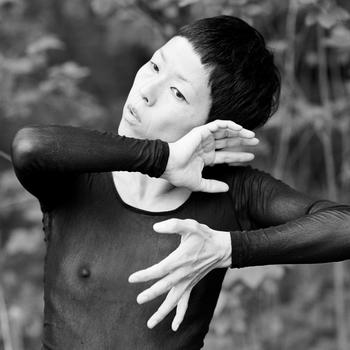Yuko Kaseki

Interweaving Performance Cultures
Fellow 2012/13
Yuko Kaseki is a Butoh dancer, choreographer and performance artist who has lived and worked in Germany since 1991. She began studying Butoh in Japan and continued her studies of the performing arts under Anzu Furukawa at HBK Braunschweig. She was a member of Furukawa’s company Dance Butter Tokio and Verwandlungsamt. In 1995, she co-founded the company cokaseki with Marc Ates in Berlin. She choreographs and performs solos, duets, ensemble performances and improvisations that incorporate Butoh as contemporary dance blending with visual design, texts and soundscapes. She has performed in Europe, the USA, Canada, Mexico, Uruguay, Argentina, Australia, Taiwan, Korea and Japan. She has collaborated with numerous international artists and companies, including inkBoat (San Francisco), CAVE (New York), Antonis Anissegos (Berlin), Isak Immanuel/Tableau Stations (San Francisco) and Theater Thikwa (Berlin). Her performance “Ame to Ame” received the Isadora Duncan Dance Award in San Francisco for best ensemble performance; “Tooboe” was nominated for the Dora Mavor Moore Award in Toronto for outstanding production; “Let My Fish Loose” was nominated in the “no-ballet” category of the International Dance Competition, Ludwigshafen, Germany; and “Kudan” was nominated for the Toyota Choreography Award 2004 in Tokyo, Japan.
Art-as-Research Project
Exploring an Open Vision of Abilities, Butoh Dance, Performance and Social Bodies – and the Limits of Freedom
Working with differently-abled performers and performers from a variety of countries and with different professions has long inspired me. How to reflect each performer’s personal history, their social aspects and particular body is central to my project. Performance is only one way of mixing and de-limiting different physical and mental states, but it can be very powerful. From 2009 to the present, I collaborated with numerous individuals and organizations in Europe and Asia to create mixed-ability performance.
The primary questions I am engaging are: Relative to their own bodily state, what is the main theme of their activity and creation? How do they work together with so-called “normal” and differently-abled people? How is performance employing mixed abilities different in Europe and Asia? How has this situation changed from the past to the present? What does this say about these cultures and their attitudes towards their own and others’ bodies? I wish for my own physical work and performances with people of different abilities to make the impossible become possible.
I wish to turn “ugliness” to “beauty,” dysfunction to function, order to out-of-order and then to a new order. Butoh as a methodology is one tool and process. However, it is not exempt from questioning and the potential for a broader opening. Engaging many layers of opposition develops the possibilities of physical imagination, moving through Butoh’s historical rebellion of dance and opening up contemporary notions of “normal bodies.” I sense that the common social judgment of “normal” and “moral” kills humanity’s rich potential. By contrast, the interweaving of bodies, e.g. differently-abled (mentally or physically), makes for uniquely formed and formless cultures of ability.
